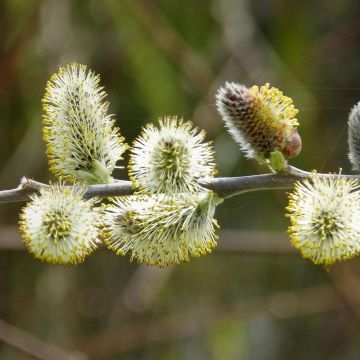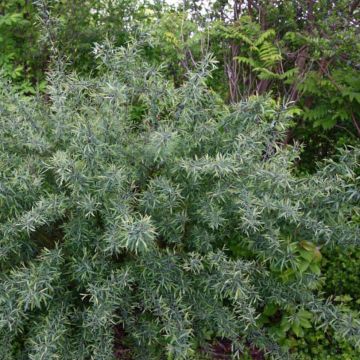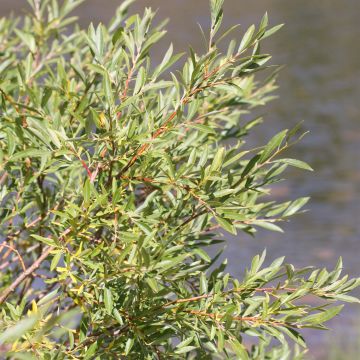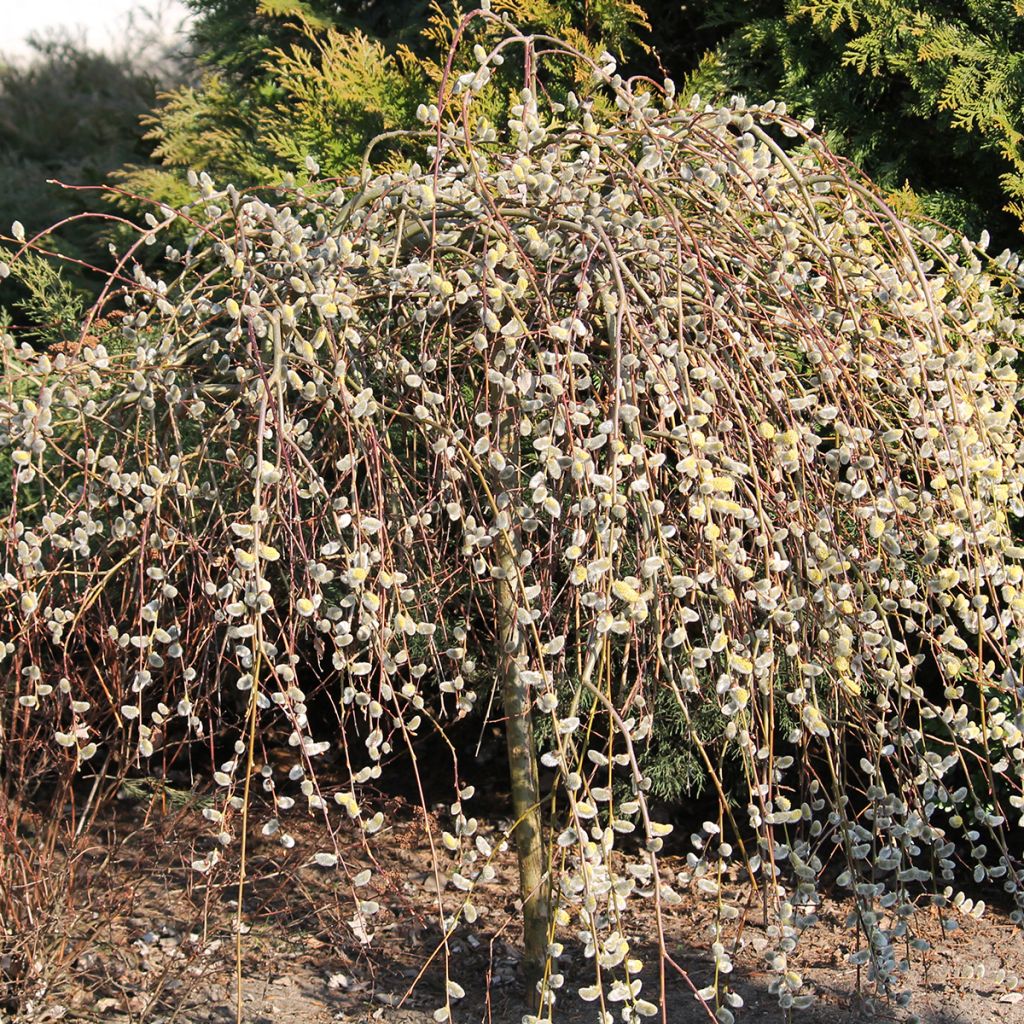

Salix caprea Curly Locks - Great Sallow
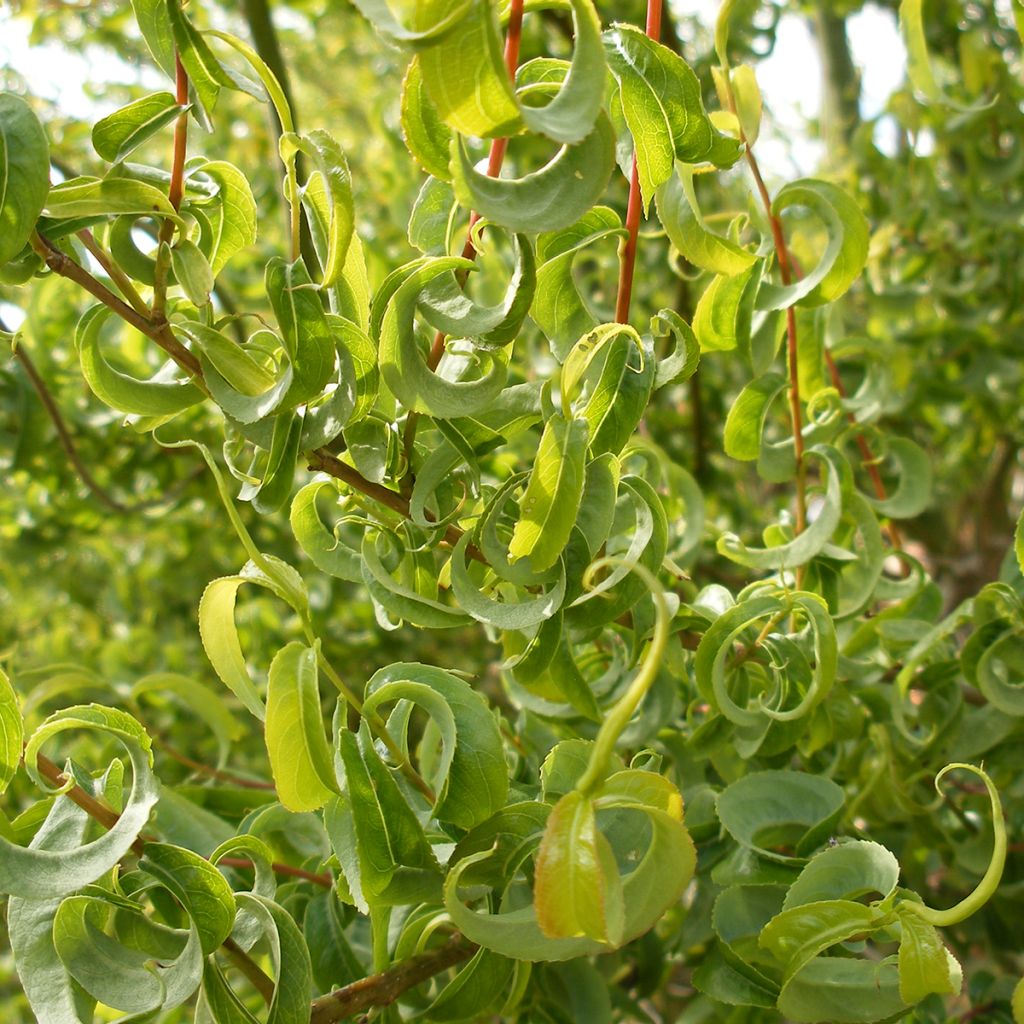

Salix caprea Curly Locks - Great Sallow
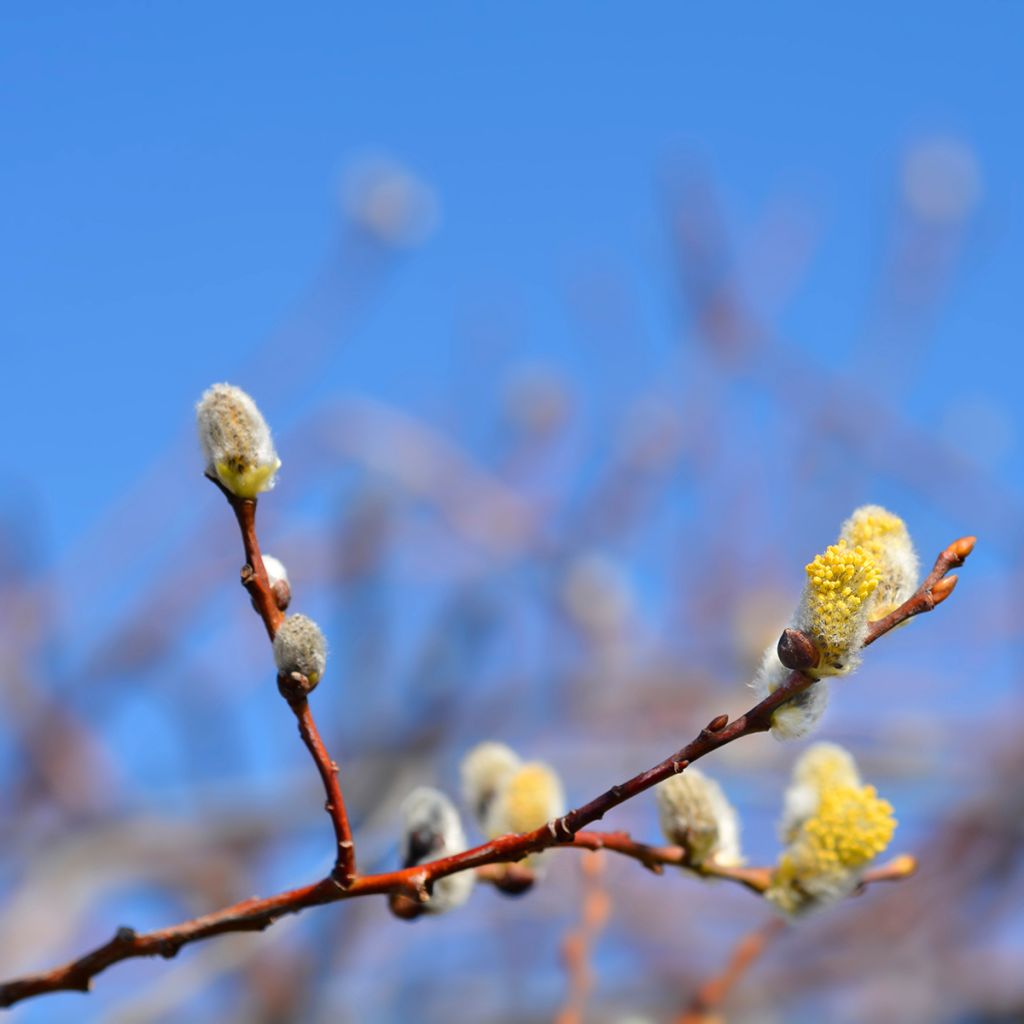

Salix caprea Curly Locks - Great Sallow
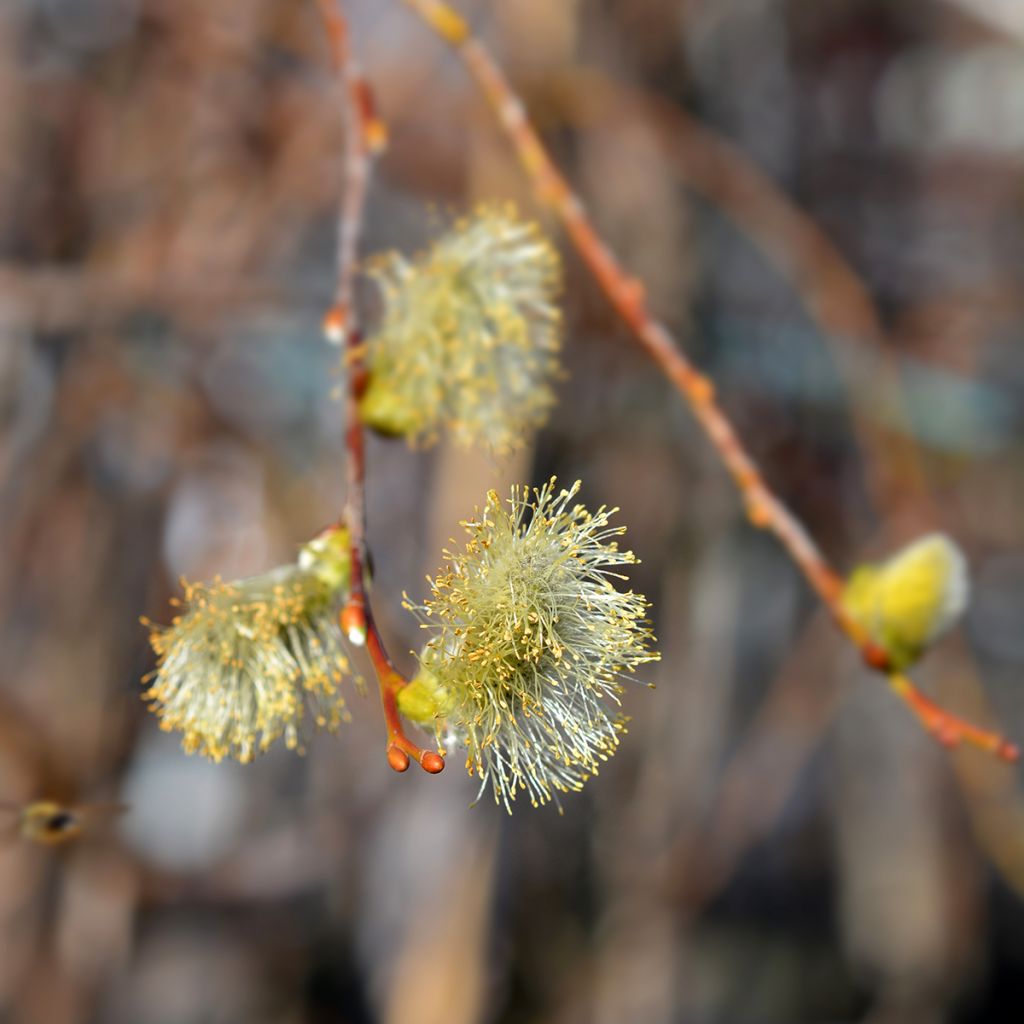

Salix caprea Curly Locks - Great Sallow
Salix caprea Curly Locks - Great Sallow
Salix caprea Curly Locks
Goat Willow, Pussy Willow, Great Sallow
Original tree but be careful, its lifespan is limited; it dies after about 10 years. I’ve had two, but I haven’t bought any more because I’m fed up with replacing them.
Agnès , 09/09/2024
Why not try an alternative variety in stock?
View all →This plant carries a 24 months recovery warranty
More information
We guarantee the quality of our plants for a full growing cycle, and will replace at our expense any plant that fails to recover under normal climatic and planting conditions.
Oversize package: home delivery by special carrier from €6.90 per order..
Express home delivery from €8.90.
Does this plant fit my garden?
Set up your Plantfit profile →
Description
Salix caprea 'Curly Locks' is a variety of Goat Willow, which, once grafted onto a stem, is distinguished by its twisted and weeping branches, giving the plant aesthetic appeal. Extremely elegant and moderately sized, reaching a height of about 1.50 to 2 metres, it is perfectly suited for small gardens, as well as container gardening on the terrace. In late winter, over several weeks, it puts on a show with its bare and shiny branches covered in silver and silky catkins, followed by golden anthers laden with pollen, highly appreciated by pollinating insects. Hardy and very easy to grow, it thrives in full sun or partial shade and adapts to any soil, even relatively dry in summer. When the catkins bloom, the branches become particularly decorative and blend perfectly into floral arrangements.
Salix caprea, more commonly known as Goat Willow, and sometimes called Pussy Willow or Great Sallow, is a species of shrubs or small trees in the Salicaceae family. There are approximately 360 species found in temperate and cold regions of the northern hemisphere. Its name comes from Latin and Frankish, derived from a Celtic root meaning "near water". Its leaves are deciduous, alternate, oval or lanceolate. As a dioecious plant, the flowers are arranged in upright catkins, either male or female, carried on separate plants. Once fertilised, the female flowers transform into two-valved capsules that release cottony seeds. They are pollinated by wind or insects. Willows, like birches, are the first trees to colonise fallow land, especially riverbanks. They prefer sunny locations and light, moist soils with a pH between 5.5 and 7.5. Goat Willow is a pioneer species and ubiquitous, being found in diverse and extensive territories. It is a light-demanding species, less exclusively associated with wet areas than most other willow species.
The 'Curly Locks' variety was discovered in the Netherlands in the 1990s. It is a male willow grafted onto a stem, with the height of the plant determined by the length of the stem. It has a characteristic upright habit, consisting of a vertical trunk topped with a regular and weeping crown. With rapid growth, this small willow reaches a height of 1.50 to 2.50 metres and a spread of 1.20 to 1.80 meters at maturity depending on the height of the graft point. The trunk is covered with smooth grey-green bark, which takes on an ash-grey hue and a cracked and fissured texture with age. The branches, with smooth bark, are reddish-brown with orange highlights and twist and turn outward and downward in all directions. The deciduous foliage consists of oval or lanceolate, 6 to 9 cm long, thick and leathery leaves, matte green on top and whitish and downy on the underside. They turn orange and brown before falling for the winter. The spectacular flowering occurs in March-April, before the leaves appear, on one-year-old branches. 'Curly Locks' only produces male catkins, which are extremely decorative, pleasantly scented and nectar-rich. These ovoid to oblong, 3 to 7 cm long catkins, are initially covered in silvery-white silky hairs and release tiny yellow flowers that are very decorative and covered in pollen.
In addition to its rapid growth, Salix caprea 'Curly Locks' can tolerate severe pruning, allowing it to be contained to a desired size and generate new, fresher, and more colourful branches. It can adapt to all types of soils, whether acidic, neutral, or alkaline. It prefers a sunny exposure but can easily tolerate partial shade. While it appreciates moist soils, it can tolerate a certain level of drought, which is not the case for all willows. Moreover, it is a very hardy plant, withstanding temperatures as low as -30°C. Low-maintenance and easy to grow, it requires almost no care and will reward you with beautiful flowering branches that can be used in bouquets.
In the category of willows, there is a great diversity of varieties, each one as unique as the next. Salix caprea 'Curly Locks', stands out for its aesthetic appeal and architectural form. Its distinctive stature allows this willow to easily stand out in a natural space, a wild-style garden, a well-maintained contemporary space, by a pond, or even in a miniature garden. To highlight its architectural form, it can be accompanied by long-flowering ground cover perennials (Ajuga, Tradescantia), perennials with sculptural and colourful foliage (dwarf Hostas, Houttuynia cordata Chameleon), grasses (Acorus, Carex morrowii), or evergreen shrubs like Nandina domestica Fire Power or dwarf bamboos. Finally, a few bulbs like Snowdrops, with their white bell-shaped flowers heralding spring, can perfect the composition. Its controlled growth and robustness also make it an ideal plant to grow in a large container. It will enhance the charm of a terrace, patio, or balcony, provided it receives periodic watering.
Properties: Like all willows, this variety contains a substance similar to aspirin in its bark. It is nectar-rich and bee-friendly: bees that forage on it produce a golden yellow honey with green iridescence, which takes on amber to beige hues as it ages. Its flavour is sweet, floral and slightly woody. Its foliage was once used as fodder for goats.
Salix caprea Curly Locks - Great Sallow in pictures




Plant habit
Flowering
Foliage
Botanical data
Salix
caprea
Curly Locks
Salicaceae
Goat Willow, Pussy Willow, Great Sallow
Cultivar or hybrid
Other Willow - Salix
Planting and care
Plant the Curly Locks Willow in full sun or partial shade. It is not very demanding in terms of soil as long as it has a certain depth to allow the bush to find some moisture in case of drought. In hot regions, once the plant is established, a generous watering every 15 days or 3 weeks will be sufficient. It will adapt equally well to light, rocky and sandy soil as it will to heavy, clayey and very moist soil. Limestone is not a problem. Ideally, when planting, use a mixture composed of half potting soil and half garden soil. It is perfectly resistant to cold and heavy frosts. To promote a bushy habit and the formation of branches bearing catkins, prune quite short after flowering, every year. Protect all cutting wounds with a healing sealant.
Planting period
Intended location
Care
-
, onOrder confirmed
Reply from on Promesse de fleurs
Spring-flowering shrubs
Haven't found what you were looking for?
Hardiness is the lowest winter temperature a plant can endure without suffering serious damage or even dying. However, hardiness is affected by location (a sheltered area, such as a patio), protection (winter cover) and soil type (hardiness is improved by well-drained soil).

Photo Sharing Terms & Conditions
In order to encourage gardeners to interact and share their experiences, Promesse de fleurs offers various media enabling content to be uploaded onto its Site - in particular via the ‘Photo sharing’ module.
The User agrees to refrain from:
- Posting any content that is illegal, prejudicial, insulting, racist, inciteful to hatred, revisionist, contrary to public decency, that infringes on privacy or on the privacy rights of third parties, in particular the publicity rights of persons and goods, intellectual property rights, or the right to privacy.
- Submitting content on behalf of a third party;
- Impersonate the identity of a third party and/or publish any personal information about a third party;
In general, the User undertakes to refrain from any unethical behaviour.
All Content (in particular text, comments, files, images, photos, videos, creative works, etc.), which may be subject to property or intellectual property rights, image or other private rights, shall remain the property of the User, subject to the limited rights granted by the terms of the licence granted by Promesse de fleurs as stated below. Users are at liberty to publish or not to publish such Content on the Site, notably via the ‘Photo Sharing’ facility, and accept that this Content shall be made public and freely accessible, notably on the Internet.
Users further acknowledge, undertake to have ,and guarantee that they hold all necessary rights and permissions to publish such material on the Site, in particular with regard to the legislation in force pertaining to any privacy, property, intellectual property, image, or contractual rights, or rights of any other nature. By publishing such Content on the Site, Users acknowledge accepting full liability as publishers of the Content within the meaning of the law, and grant Promesse de fleurs, free of charge, an inclusive, worldwide licence for the said Content for the entire duration of its publication, including all reproduction, representation, up/downloading, displaying, performing, transmission, and storage rights.
Users also grant permission for their name to be linked to the Content and accept that this link may not always be made available.
By engaging in posting material, Users consent to their Content becoming automatically accessible on the Internet, in particular on other sites and/or blogs and/or web pages of the Promesse de fleurs site, including in particular social pages and the Promesse de fleurs catalogue.
Users may secure the removal of entrusted content free of charge by issuing a simple request via our contact form.






































